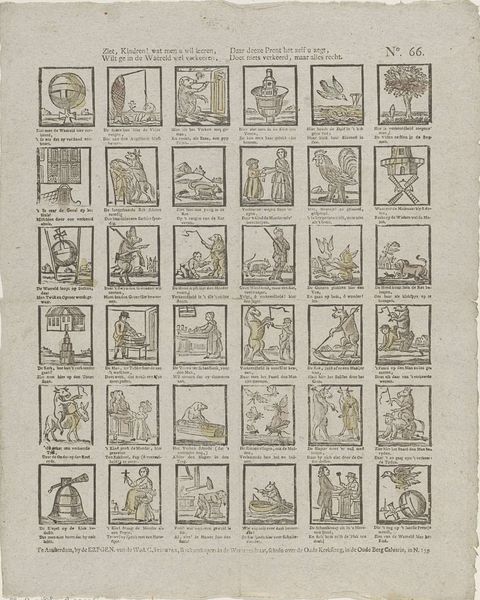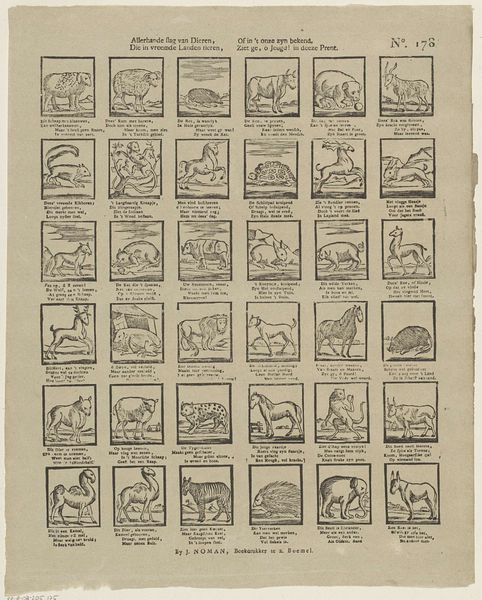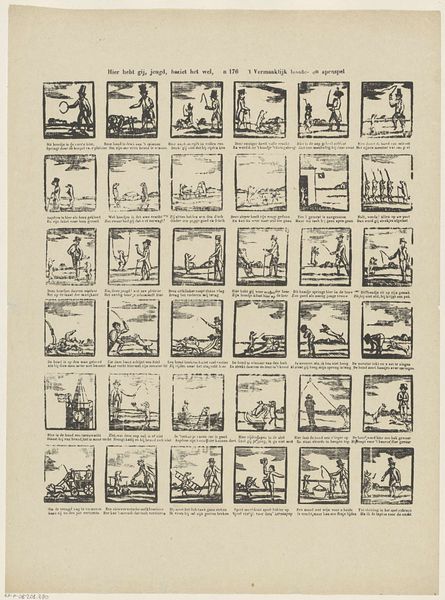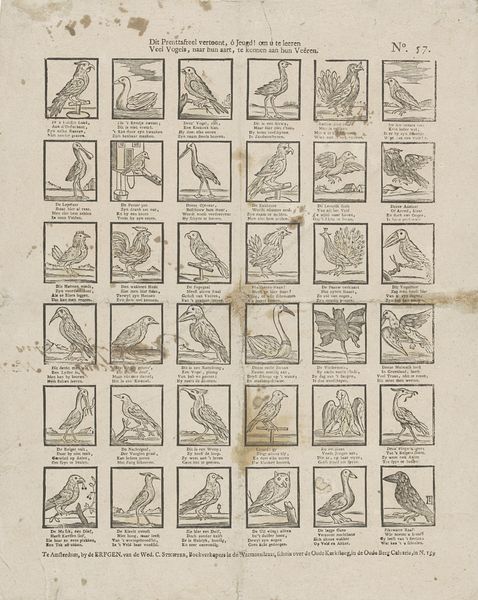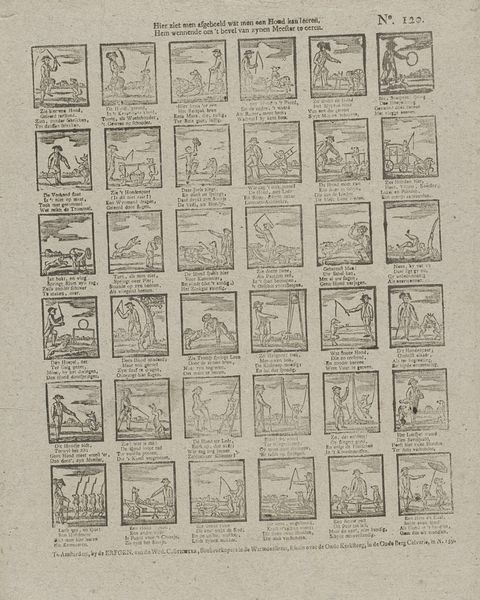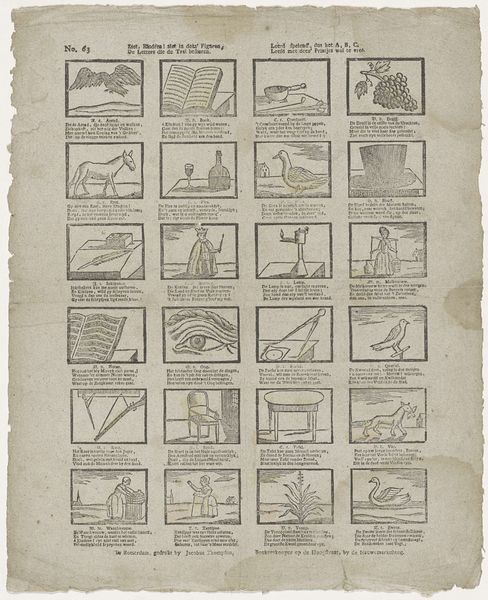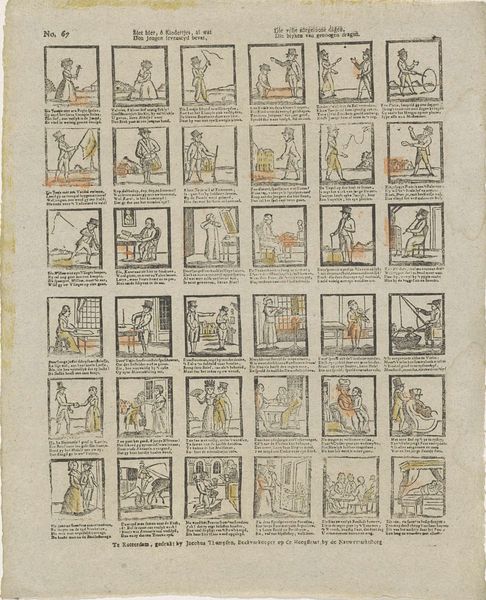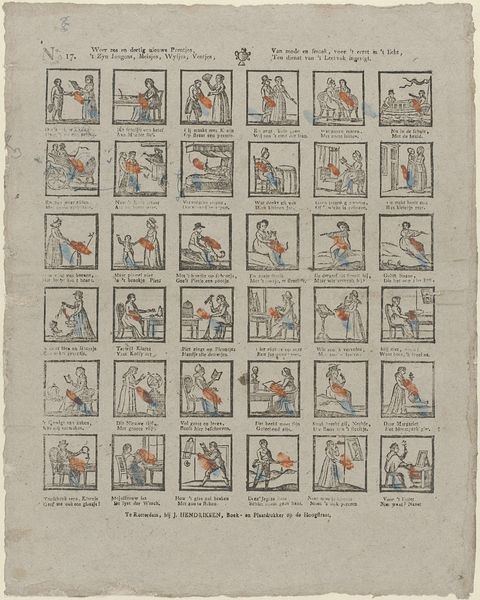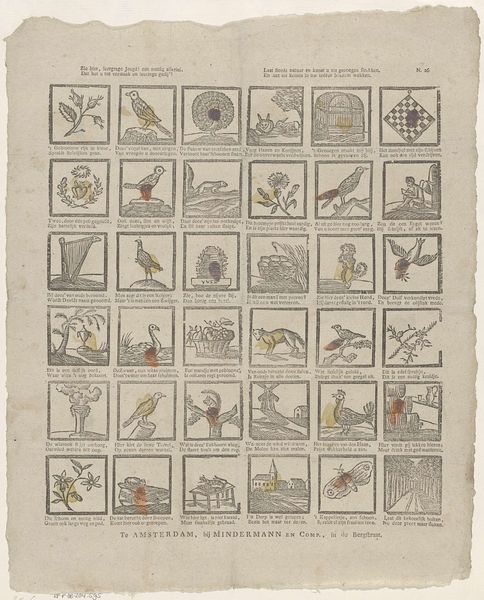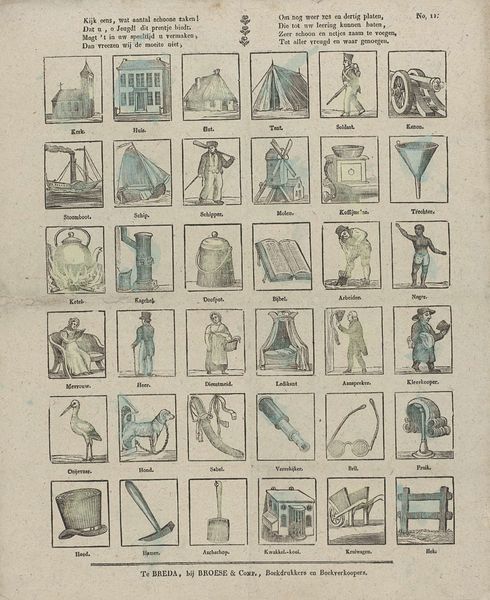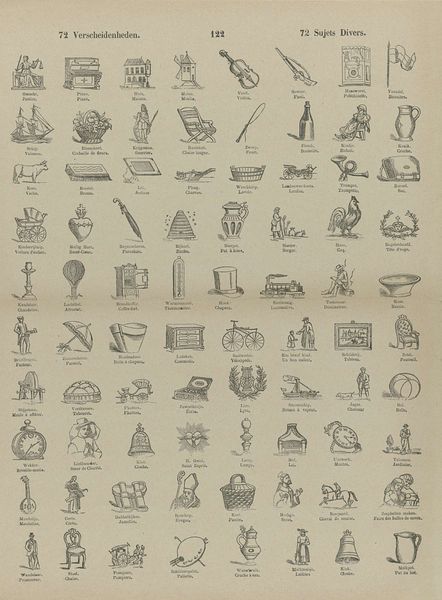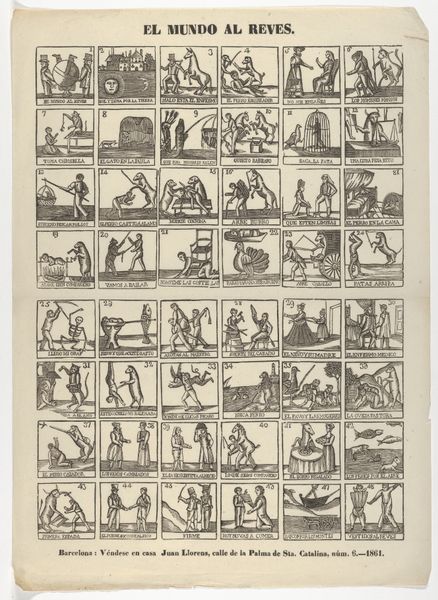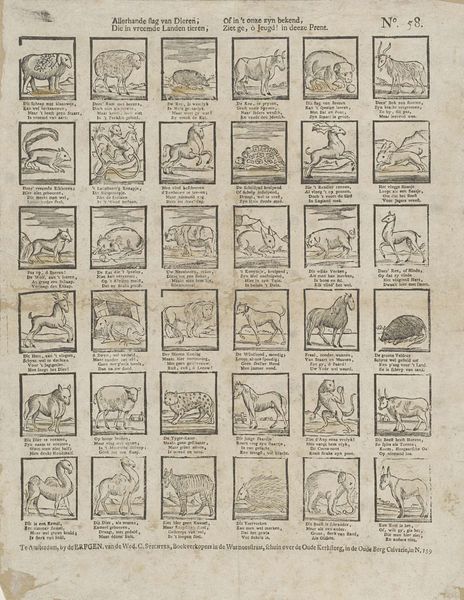
Al wat uw oog op deze print / Zoo geestig afgeteekend vindt (...) 1832 - 1850
0:00
0:00
graphic-art, print, engraving
#
graphic-art
#
narrative-art
# print
#
old engraving style
#
hand drawn type
#
folk-art
#
pen-ink sketch
#
ink colored
#
pen work
#
genre-painting
#
engraving
Dimensions: height 416 mm, width 334 mm
Copyright: Rijks Museum: Open Domain
Curator: Here we have a print titled "Al wat uw oog op deze print / Zoo geestig afgeteekend vindt (...)", which roughly translates to "All that your eye on this print / So wittily drawn finds (...)." It was created sometime between 1832 and 1850. The artist is Theodorus Johannes Wijnhoven-Hendriksen. Editor: What a curious thing! It reminds me of a very elaborate visual riddle, or perhaps a series of whimsical thought-bubbles escaping from some long-forgotten philosopher’s head. The linework is simple, almost crude, yet somehow incredibly charming. Curator: Indeed. This engraving on graphic-art paper, likely intended as a broadsheet or poster, showcases the conventions of genre painting and narrative art reduced to their essence. Each small square presents a self-contained scene, a vignette rich in potential symbolic meaning. Editor: It's like a pre-digital meme board! I’m especially drawn to the odd juxtapositions. Like, why a lobster next to a townscape, and then a hot air balloon? The mind reels trying to invent narratives that connect them. Curator: The visual organization of the print adheres to a structural framework, prioritizing the semiotic function of each individual element. We can discern clear lines, geometric precision, a careful orchestration of light and shadow within each miniature scene. Editor: But there's a naiveté there, too. See how the perspective's slightly off in that townscape, or how the faces are simplified? It’s not about perfect realism, it’s about capturing the spirit, the feeling, the gist. It breathes with life and tells the unspoken tales of the heart, doesn't it? Curator: While acknowledging the subjective experience, it’s crucial to also interpret through historical and cultural lenses. The choice of imagery may reflect popular proverbs, moral tales, or social commentaries of the era. The hand-drawn typeface introduces another element to decipher. Editor: Exactly! Maybe we aren’t meant to “decode” it all logically. The pleasure might just lie in letting the images spark random associations, kind of like daydreaming. This is really quite charming! Curator: Certainly, its evocative power endures, defying a purely systematic analysis. It merges folk art simplicity with controlled, if imperfect, execution, making its lasting presence undeniable. Editor: Absolutely! It's a fascinating piece.
Comments
No comments
Be the first to comment and join the conversation on the ultimate creative platform.
